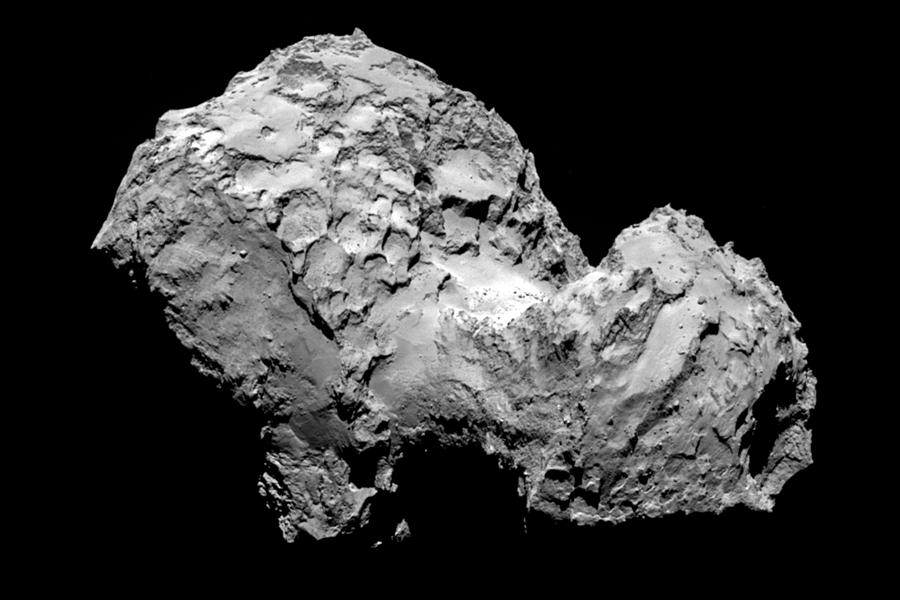Rosetta mission: Scientists choose landing site on comet
Loading...
Nearly a month and a half after the European Space Agency's Rosetta orbiter arrived at comet 67P/Churyumov-Gerasimenko, mission planners have identified a touch-down spot on its nucleus for Rosetta's Philae lander – a 220-pound craft that will make unique measurements of the comet's composition and structure from the surface of the cometary core.
The comet's nucleus has the look of a 2.5-mile tall mushroom with a large chunk of sod still attached to its stem. The landing site mission managers announced on Monday falls within a square about 0.6 miles on a side located on the base of the stem, with a back-up site picked out on the mushroom cap. For now, they've dubbed the prime site, Site J, and are looking to have the lander touch down on Nov. 11.
If the attempt is successful, this will mark the first time humans have ever landed a spacecraft on a comet.
The prime landing site "in particular offers us the chance to analyze pristine material, characterize the properties of the nucleus, and study the processes that drive its activity," said Jean-Pierre Bibring, a researcher at the Institut d'Astrophysique Spatiale in Orsay, France, and one of the lead scientists for the lander, in a prepared statement.
As with lander sites on other solar system objects, the team needed to find a location with few boulders. And if the site has any slope to it, the slope has to be gradual enough to prevent the lander from landing and rolling legs up, like a helpless turtle.
The team is playing a cosmic version of "Beat the Clock." The comet is en route to its closest approach to the sun next August. But as it makes that approach, it will heat up and spew ever larger amounts of dust and gas from the surface. Planners hope to place Philae on the surface in November, before the fireworks begin in earnest.
Putting the craft on the surface – and keeping it there – is no small feat given the comet's weak gravity. On Earth, a craft has to reach speeds of about 25,000 mph to break free of the planet. On 67P/Churyumov-Gerasimenko, merely attempting to saunter across the surface would launch an comet-walking astronaut back into space.
Once Rosetta releases Philae, the craft will slowly descend to the surface, then harpoon it. The harpoons, along with ice screws, will hold the lander on the surface. In addition to the historic nature of the mission, the attempt is risky because between now and November, jets of gas erupting from the surface could become increasingly active and could alter the landing site's position relative to Rosetta's orbit. It could take between five and 10 hours for the lander to touch down after it's released.
Philae carries a suite of 10 instruments, including a soil-sampling system, to take the comet's measure. The Comet Nucleus Sounding Experiment by Radiowave Transmission (CONSERT) represents one of the more unique packages in the suite. The experiment consists of a transmitter on the orbiter that sends a coded radio signal through the nucleus to the lander. After a brief period, the lander sends its own signal back to the orbiter. Each exchange takes less than a second, allowing for roughly 6,000 measurements each orbit.
Data from the approach, known as radio tomography, will be used to identify different features within the comet's nucleus – any layering and layer thicknesses, changes in density, and information on what these features are made of.
Assuming all goes well, Philae could keep working through next March, according to ESA.






